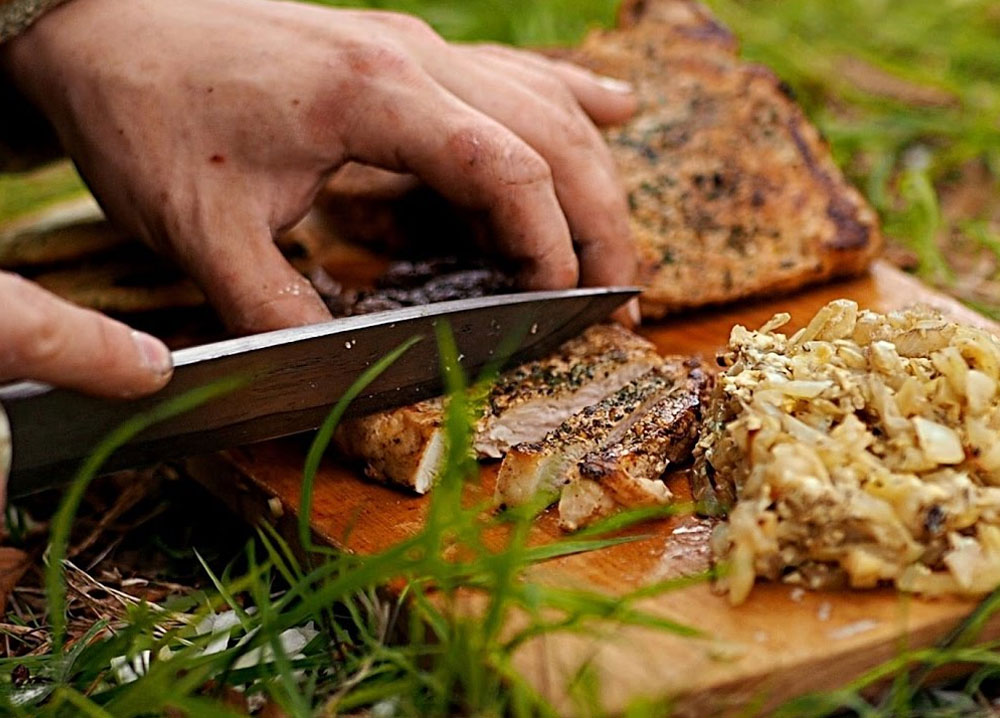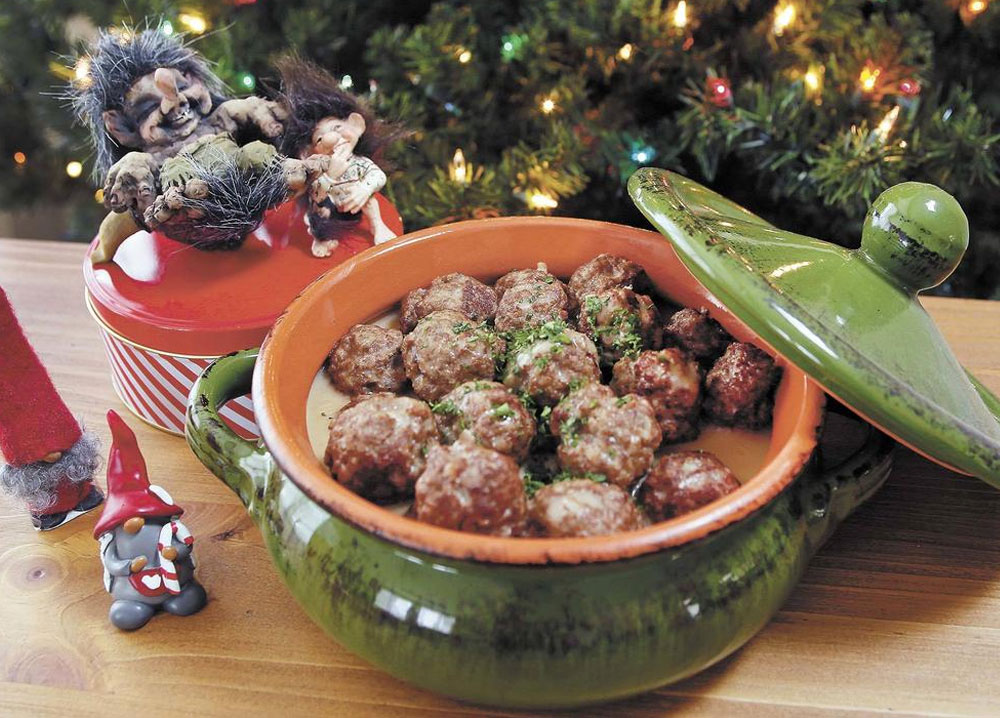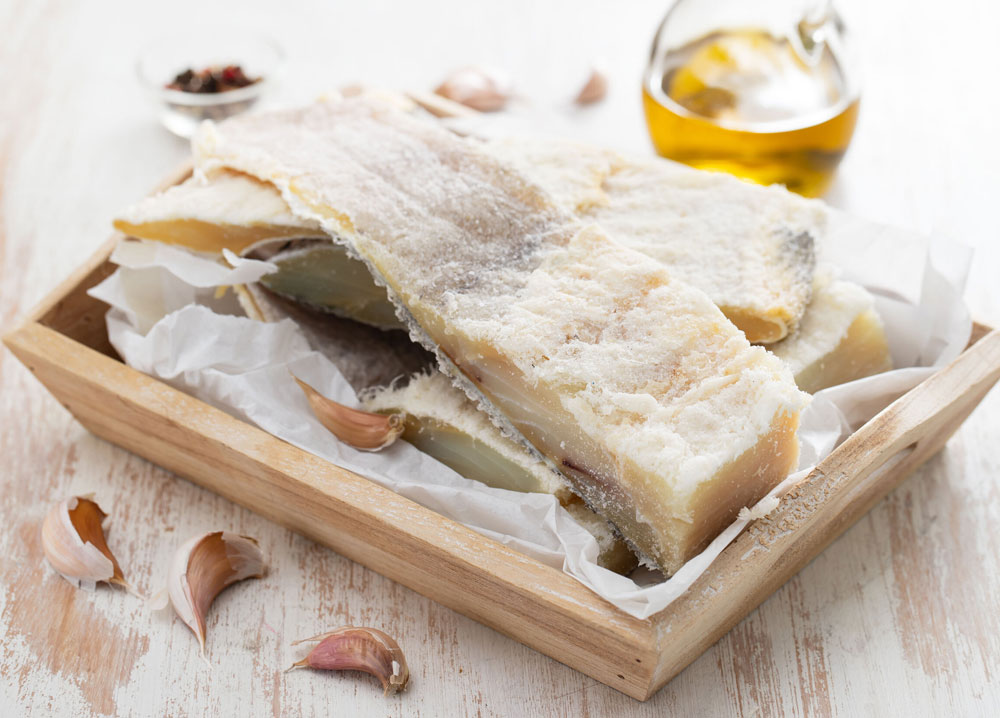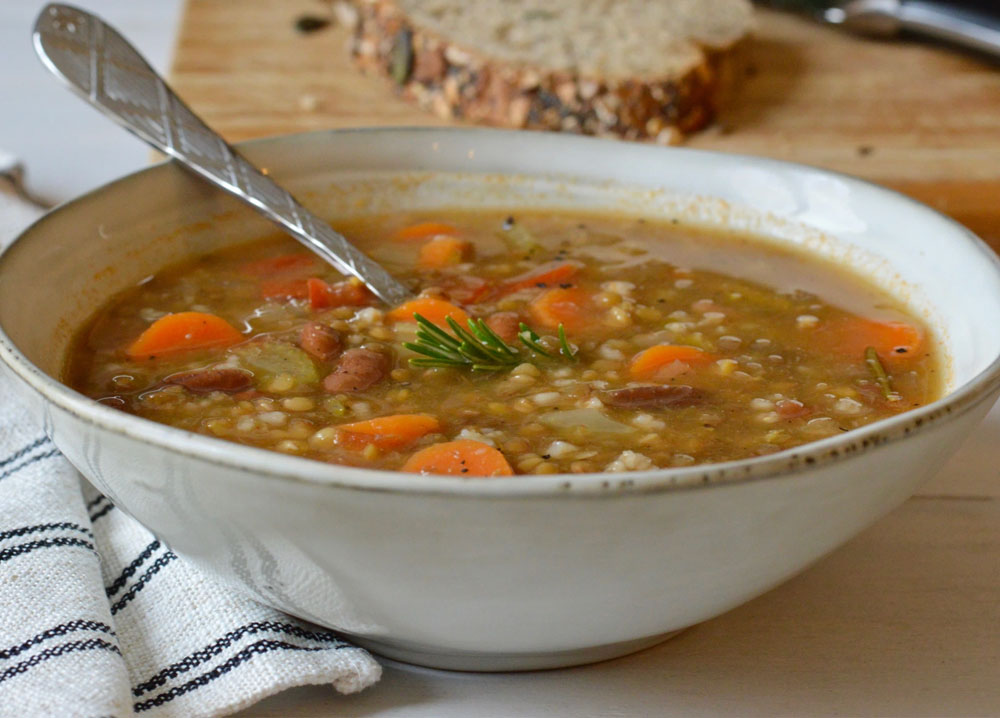Viking Recipes: Northern European Cooking

From fermented shark in Iceland to fish and chips in Ireland, meatballs and pies in Norway, Northern Europe offers a delicious and somewhat quirky variety of recipes to keep you warm this cooler season in Australia. While some of the more adventurous dishes are best left to the Northern Europeans to cook, there are many meals that are easier to prepare and will gather your family and friends around.
Our Viking recipes can be great conversation starters and a delicious excuse to get together. Note that the Viking Age was not a time in which many worried about the fat content of food. The Vikings needed all the energy that they could get in the form of fat – especially in winter. This is why meat, fish, vegetables, cereals and milk products were all very important to their diet. Sweet food was consumed in the form of berries, fruit and honey. In England the Vikings were often described as gluttonous – they ate and drank too much according to the English.
We won’t judge. Moreover, the historical artifacts today that gave us knowledge about the food that the Vikings ate typically date to after the Viking period, so we must regard such information with caution. Therefore, today we’d like to share some of our favourite Northern European recipes, which come with the touch of the Viking era but loved all across the cooler countries of Europe.

Norwegian Meatballs
If you are Norwegian (by heritage or at heart!), these meatballs are true comfort food. And if are not from anywhere in Northern Europe, you will find the combination of meats and spices in this dish makes a delightful treat. These meatballs make for hearty winter fare served over buttered egg noodles, or even with butter and parsley adorned boiled potato for a simple but tasty entrée.
Norwegian meatballs (or Norske kjøttboller) are a perfect (cold) Christmas meal as well, small party snacks or a nice warm dinner by Netflix.
Ingredients:
All you need is 454g of lean ground beef, 227g of ground pork, 1 egg, 60g of panko (crustless white bread processed into flakes and dried), 1 tsp salt, ½ tsp pepper, ¼ tsp nutmeg, ¼ tsp ginger ⅛ tsp all spice, 118ml of milk, 1 yellow onion, minced, 10g of fresh parsley, chopped, 86g of butter, 31g of flour, 946ml of low sodium chicken broth and 118ml of red wine.
How to make it?
This won’t take you more than half an hour. Just combine beef, pork and egg in a large bowl; make a well in the center and add breadcrumbs, salt, pepper, ginger, all spice and milk. Let it stand 2 minutes.
Then add onion and parsley and mix together with your hands until completely incorporated. Form this into an approximately 25-mm balls. Place 29g of butter in a large skillet over medium high, and working in batches, brown meatballs on all sides until cooked through, about 8 minutes per batch. Transfer to a serving bowl; cover loosely to keep warm.
Reduce heat to medium, place remaining butter in skillet, add flour and stir to form a thick paste. Cook, stirring constantly, 2 minutes; then whisk in broth and wine. Bring to a boil, reduce heat; simmer until thickened, about 7 minutes. Pour over meatballs, tossing to coat. Serve immediately.
Ah! Delicious! Nyt!
Which is Norwegian for enjoy.

Icelandic Baked Fish
The Icelander’s ability to catch fish played an enormous part in their ability to survive in this difficult land. The oceans give plenty where the land gives comparatively little. Apart from cooking and salting fish, fish in Iceland was historically dried. And it is easy to see why – the climate in Iceland did not facilitate freezing because the temperatures were so variable; the windy climate in Iceland, as it turns out, is ideal for drying, which helps to keep your catch for longer. And when cooked, fish in Iceland is often eaten with large amounts of butter and rye bread. And much of Icelandic food has been known more for its strangeness rather than its colour or flavour, so today we are sharing one of our favourite and simplest Icelandic recipes for all the seafood lovers out there.
Ingredients:
All you need is 1 tablespoon of butter, 6 fish fillets or six cod fish fillets, 1 lemon, 200g of Emmenthal cheese or 200g of tilsiter cheese, grated, 1 of tablespoon mustard, 1 cup of cream and 1/2 cup breadcrumbs.
How to make it?
Preheat your oven at 180C, butter a baking dish and put the fish fillets into the baking dish.
Season the fillets with salt, pepper, and freshly squeezed lemon juice. Cover the fish with ground cheese.
Mix mustard with cream, and pour it over fish fillets. Cover with breadcrumbs. Bake the fillets for 35 minutes.
Serve with rice or noodles. Or by itself as snacks.
Enjoy your Íslenskur bakaður fiskur!

Medieval Pottage Stew
We are very excited that the world shifted its culinary beliefs. It now grants us with some of the most delicious meals from all around Europe.
Ingredients:
To cook this stew up you’ll need 1 cup of carrots, diced, 1 cup of parsnips, diced, 1 cup of onions, diced, 1 of cup turnips, diced, 1 cup of mushrooms, sliced, 1 cup of leeks, diced, 1 cup of cabbage, chopped, 1 cup of green beans, chopped, 2 qts of vegetable broth, low sodium, 1 bay leaf, 1/2 tsp of rubbed sage, 1/2 tsp of dried thyme, 1/2 tsp of dried rosemary, 1/2 tsp of black pepper, 3/4 tsp of salt, 1/2 cup of red wine, 1 tbs of balsamic vinegar, 1/2 cup of rolled oats and 1/2 cup of barley flakes.
How to make it?
To get stewing, in a large stew pot, add 1 cup of diced carrots, 1 cup of diced parsnips, 1 cup of diced onion, and 1 cup of diced turnips. Sweat the veggies using about ¼ cup of low sodium veggie broth.
After 10-15 minutes, add 1 cup diced leeks, 1 cup sliced mushrooms, 1 cup fresh green beans (or use a 15oz can, rinsed and drained), and 1-2 cups of chopped cabbage. Let all of that simmer for a few minutes and then add 2 quarts of low sodium veggie broth. Season with 1 large bay leaf, ½ tsp dried thyme, ½ dried rosemary, ½ tsp rubbed sage, ½ ground pepper, and ¾ tsp salt. Stir in ½ cup of red wine (which is possible that peasants didn’t use in their stews).
Bring the soup to a boil, and then lower the heat to LOW and cover. Let simmer for 30 minutes. Stir in 1 cup rolled oats. Continue simmering for another 20-30 minutes, or until grains are cooked. Add any additional seasoning if desired, 1 Tbs of balsamic vinegar, and remove bay leaf before serving.
This vegetable stew pairs well with a nice, crusty loaf of rye bread. And of course, you are welcome to fix it with meat or fish of your choosing, if you want to add protein. Otherwise enjoy your delicious vegetable meal.
No matter who you are, the word Viking conjures vivid images of daring seafarers, bloodthirsty warriors, fierce conquerors or intrepid explorers. But for us, Vikings are also about rich hot food and daring culinary adventures.
If you’d like more information regarding Food Tours, please don’t hesitate to contact our team on 1800 242 353.
